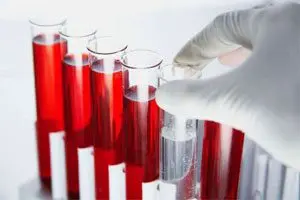Contents
Hyperproteinemia is a high level of protein in the blood. Such a violation develops in many diseases, for example, with peritonitis, diabetes mellitus, etc.
To determine the level of protein in the blood, it is necessary to donate blood for a general and biochemical analysis. There are no other ways to measure it, except for laboratory studies. It must be understood that hyperproteinemia itself does not develop, it is always caused by certain diseases. Therefore, in order to bring the protein level back to normal, you need to find out the reason that provoked this jump. By eliminating it, it will be possible to normalize blood counts.
How does hyperproteinemia develop?

The human body cannot exist without protein. He takes part in the most important biochemical processes, is responsible for blood clotting, ensures its normal pressure in the bloodstream. Proteins transport nutrients and trace elements, and globulins provide immune protection.
Causes leading to the development of relative hyperproteinemia:
Burns with damage to large areas of the body.
Peritonitis.
Intestinal obstruction.
Profuse and prolonged vomiting.
Diarrhea.
Diabetes insipidus.
Chronic nephritis.
Ketoacidosis that develops against the background of diabetes mellitus.
Causes that can provoke absolute hyperproteinemia:
Myeloma, Waldenström’s disease. At the same time, the level of total protein in the blood can exceed the mark of 120 g / l.
Hodgkin’s disease.
Heavy chain diseases.
Chronic polyarthritis.
exacerbation of hepatitis.
Autoimmune pathologies.
Sarcoidosis.
Cirrhosis of the liver.
All of these conditions pose a threat to human health, as they can cause serious complications. Therefore, they need to be treated in a timely manner.
Types
There are relative and absolute hyperproteinemia. Relative hyperproteinemia is caused by loss of water in the body due to which the level of protein in the body becomes higher. It can be provoked by diabetes mellitus, vomiting, diarrhea, dysentery, cholera, etc.
Absolute hyperproteinemia accompanies most infectious diseases in which there is an excessive formation of globulins.
Most often, relative hyperproteinemia is diagnosed in people.
Symptoms of hyperproteinemia

Since hyperproteinemia is not an independent disease, it does not have its own symptoms.
However, it is possible to assume that a person has an increased level of protein in the blood, according to the following conditions:
A person has a massive body burn.
The patient suffers from prolonged diarrhea, vomiting or constipation.
The patient is diagnosed with diabetes insipidus, liver cirrhosis, or hepatitis.
The patient complains of increased fatigue and malaise.
The patient is concerned about pain in the lower back, in the bones, in the region of the right hypochondrium.
The patient has an increase in body temperature.
In general, the symptoms will depend on what kind of pathology develops in a person. To do this, you need to perform a comprehensive diagnosis.
How to define hyperproteinemia?

To understand that a person has an increased level of protein in the blood, it is necessary to focus on the indicators of its norm.
They depend on the age of the person:
At the age of up to a month, the protein level is 63-60 g / l.
From a month to a year – 44-79 g / l.
From a year to 4 years – 60-75 g / l.
5-7 years – 53-79 g / l.
8-17 years old – 58-79 g / l.
22-34 years old – 75-85 g / l.
34-74 years old – 76-83 g / l.
Over 75 years old – 69-78 g / l.
Thus, they speak of hyperproteinemia when the level of total protein in the blood exceeds 85 g / l, and the albumin content is 50 g / l.
In order to determine the level of protein in the blood, it is necessary to pass a biochemical blood test. Sometimes a proteinogram is required, when the total protein is divided into fractions and the quantitative content of albumin, alpha, beta, gamma globulins is calculated. This test is ordered when the doctor suspects that the patient has myeloma, acute or chronic inflammation of the connective tissue, or an autoimmune disease.
For the results to be as reliable as possible, you must adhere to the following recommendations:
You must stop eating 8 hours before donating blood. You need to go for analysis on an empty stomach.
The day before the study, you can not overeat, as well as eat foods that contain a large amount of protein.
You should not drink a lot of water before donating blood.
It is important to avoid physical activity.
After the doctor has the results of a blood test in his hands, he will be able to understand which diagnostic tests this patient needs to undergo in the future. It is possible that he will need an ultrasound of the liver, kidneys or other internal organs.
Treatment of hyperproteinemia
Treatment of hyperproteinemia is based on the cause that provoked this symptom.
So, with multiple myeloma, chemotherapy is carried out using alkylating drugs and glucocorticoids. Hodgkin’s disease requires radiation and chemotherapy. In autoimmune pathologies, glucocorticosteroids are prescribed.
To reduce the loss of fluid volumes, the patient needs to drink as much water as possible. If dehydration cannot be eliminated, then intravenous infusions are necessary. Be sure to act on the cause that caused diarrhea or vomiting. However, regardless of it, the patient must adhere to a diet that will not overload his body with proteins.
Preventive measures are reduced to the timely treatment of infectious diseases, maintaining a healthy lifestyle and sufficient physical activity.









